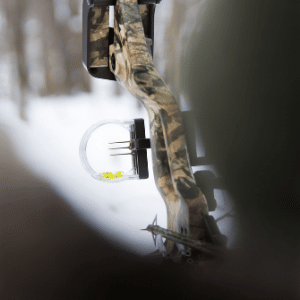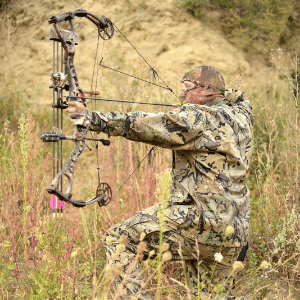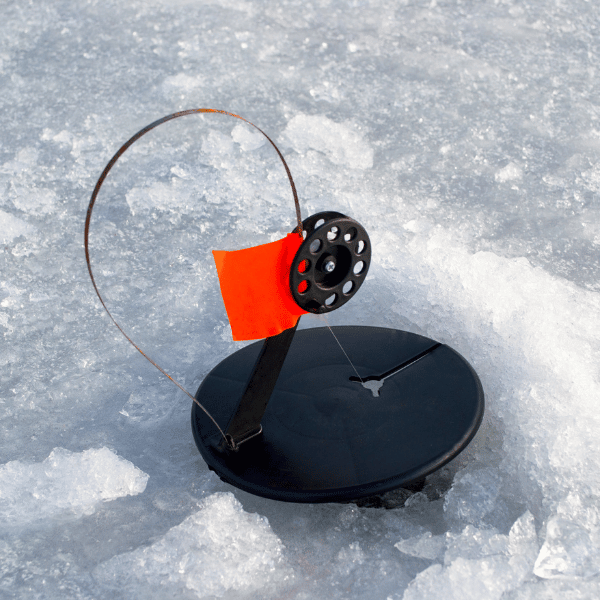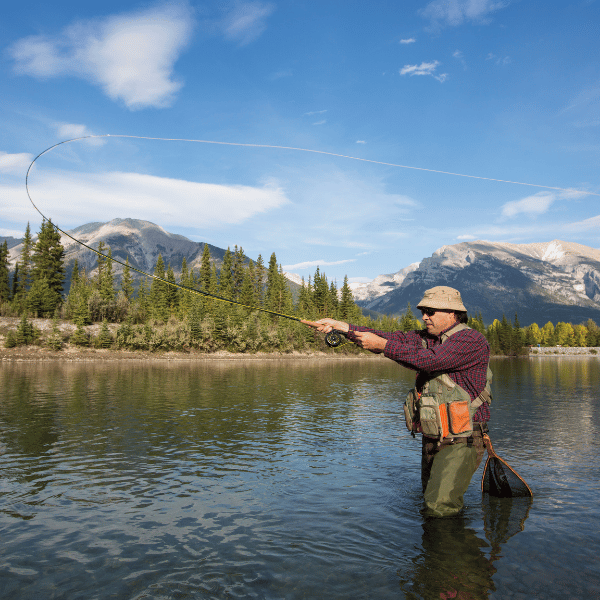
If you’re buying your first bow, you are probably wondering what is the difference between a recurve vs compound bow?
A recurve bow uses a wood form design to create tension on the bowstring and is an upgraded version of a traditional bow. A compound bow is a highly engineered bow with cams, separate riser and limbs, and various ways to fine-tune them. The compound bow is the popular choice between recurve and compound bows used for hunting today.

Let’s take a closer look at both styles starting with the more basic recurve bow and then moving onto the more complex compound bow.
Contents
How a Recurve Bow Works
Other than a simple bow, the recurve bow is the most ancient type of bow in history.
The recurve bow has been in use since biblical times and was almost universal among horse archers like the Huns, Mongols, Magyars, and Turks. The Chinese and Koreans have also used recurve bows since the BC era.
Recurve bows aren’t just limited to the old world, either. Native American peoples were using recurve bows for hunting and warfare for centuries before the first Europeans made contact.
What does recurve bow mean?
The term “recurve” refers simply to the shape of the bow. Instead of being shaped like a simple arc, the tips of the recurve bow are angled away from the archer.
How Recurve Bows Shoot Arrows
This second curve (“recurve”) allows the bow to store significantly more energy when fully drawn. You’re effectively tensioning the same bow in two directions simultaneously.
In ancient times, this was primarily used to make bows smaller. With smaller bows of equal power, mounted archers were able to pack the same punch as their unmounted counterparts.
How Are Recurve Bows Made
Ancient recurve bows were made of wood, but modern recurve bows are generally made of more advanced materials.
Typically, a modern recurve bow will be constructed in layers. For example, you might see several layers of fiberglass, wood, or carbon fiber. These layers surround an inner tension core called a riser, which is generally made of aluminum, magnesium, wood, or carbon.
As a matter of fact, this composite design extends to ancient recurve bows as well. These exquisite bows were constructed from multiple layers of bone, horn, and wood, and were extremely difficult to craft.
This type of ancient bow is sometimes called a “composite bow,” which is not to be confused with a modern carbon fiber recurve. We should also point out that there are also modern composite bows, which are replicas designed to look like ancient composite bows.
How a Compound Bow Works

In stark contrast to the recurve bow, the compound bow is a relatively recent invention.
Invented in Missouri by an archer named Holless Wilbur Allen, it was first fired in 1966, and patented in 1969. So while the recurve bow is older than written history, the compound bow is younger than many people living today.
How Compound Bows Shoot Arrows
A compound bow is designed to allow archers to draw and hold a bow that they wouldn’t otherwise be able to hold. It achieves this with a set of cams and pulleys, which turn as the limbs are tensioned. There’s a common myth that this system is designed to make the bow easier to draw.
While it’s true that compound bows are more rigid than recurve bows, that’s not the primary benefit. The primary benefit is that the cam system creates a phenomenon called “let-off.”
What is Compound Bow Let-Off?
The let-off happens because the cams aren’t perfectly round. Instead, like cams in an automobile or other motor, they’re irregular. As the cams rotate, they reach a point where the tension is mostly relieved. The cams take on most of the weight instead. This is referred to as the “valley,” and it’s where you hold your bow while you’re taking aim.
Right before you reach the valley, you’ll typically reach a peak. The exact draw length required to reach the peak and valley can be adjusted to some extent, so you can control when and how much let-off you get.
There are limits to this, and unless you are very experienced, it’s best to have your bow professionally adjusted. Moreover, if you remove the draw-stops on some compound bows, they can lock in place at full draw. In that case, you’ll need professional help to safely release the bow.
Much like with recurve bows and composite bows, there’s some confusion between compound bows and composite bows. Prior to the invention of the compound bow, the terms were often used interchangeably – if incorrectly – to refer to composite bows. You won’t see this in any modern writing, but it pops up in old books.
Difference Between Recurve and Compound Bow
Recurve Bow
Pros:
- Recurve bows are low-maintenance. Provided you have a supply of strings and your bow doesn’t get seriously damaged, there’s not much that can go wrong with one. The exception to this would be wood recurve bows, which need to be kept oiled and free of water.
- Recurve bows are the ultimate survivalist tool. If you hunt for the challenge and not just for the meat, it doesn’t get much tougher than a recurve bow. Recurve bows are also authentic. They’re the same tools our ancestors have been using for thousands of years.
- Recurve bows are lighter and easier to carry. Without a bunch of cams adding weight, a recurve bow weighs comparatively little. You can take one on a days-long, deep-woods excursion without adding a ton of excess weight to your pack.
Cons:
- Recurve bows require greater physical strength. There are no cams or pulleys to help you hold the bow when it’s fully drawn. You have to hold it with raw muscle power. This means that you need to have greater upper body strength to use a bow of comparable draw weight.
- Recurve bows have less range and accuracy. Since you can handle a comparatively less powerful bow, you won’t be able to shoot as far. And because you’ll be holding it drawn at full weight, your muscles will be under strain. This can lead to accuracy issues, particularly as you continue to hold the bow drawn longer.
- Recurve bows require more practice. Because of all these factors, recurve bows are far from a “point and shoot” solution. You need to dedicate yourself to spending plenty of time at the range honing your skills.
Compound Bow
We’ve looked at why you might – or might not – want to own a recurve bow. What about a compound bow?
Pros:
- Compound bows are easier to aim. Because they let off towards the end, compound bows are easier to hold steady. This means you can line up a shot with confidence, without straining.
- Compound bows require less training. This isn’t to say you can forego target practice altogether. A good compound bow is a powerful weapon, and you need to practice if you’re going to use it responsibly. That said, it takes less range time to gain accuracy and confidence. The better range also means you don’t have to work as hard on your stalking and other hunting skills. You’ll still need to get closer to your target than you would with a gun, but not as close as you would with a recurve bow.
- Compound bows are easier to customize. Compound bows have a larger frame that’s designed to support scopes, stabilizers, and other accessories. These can be difficult or impossible to install on a recurve bow.
Cons:
- Compound bows are larger and heavier. Because of the cams, compound bows are bigger and heavier than recurve bows. This can make them a pain to carry out in the field, particularly on a long hunt.
- Compound bows require more maintenance. There are more moving parts to a compound bow, so you can expect to spend more time tinkering with it. Any time you save on the range will be spent on a tool bench, and money saved on practice arrows will be spent on tools instead.
- Compound bows are less “authentic.” If you’re going for a real wilderness experience, a compound bow can detract from that. If nothing else, the modern look really doesn’t jive with an old-school, back-to-nature aesthetic. If authenticity is essential to you, look for a recurve instead.
When to Use Each Bow Type
So, when would you want to use a recurve vs compound bow?
In a purely practical sense, compound bows are almost always the better option. You get better range, power, and accuracy. There’s really not much more you could ask for in terms of performance. This is true whether you’re trying to put a practice round on the bullseye or harvest an eight-point buck.
That said, there are some good arguments in favor of a recurve bow. To begin with, they require more skill to use. If you learn to shoot with a recurve bow, learning to shoot a compound bow in the future will be quick and easy. The same can’t be said in reverse.
In addition, recurve bows are still required for many elite competitions. This extends so far as the Olympics, where all the archery events are for recurve archers only. If you want to learn to compete on an elite level, you might as well start out early with a recurve bow.
Compound Bows vs Recurve Bows FAQ
Choosing whether a compound bow vs recurve bow is better comes down to what activity you plan on doing. Also, what you are trying to achieve. Although some people use recurve bows for hunting, the compound bow is usually the better choice for hunting. If you are looking for a bit more of a sporty challenge or having fun shooting at targets, the recurve bow may just be what you are looking for in a bow.




